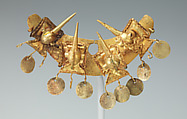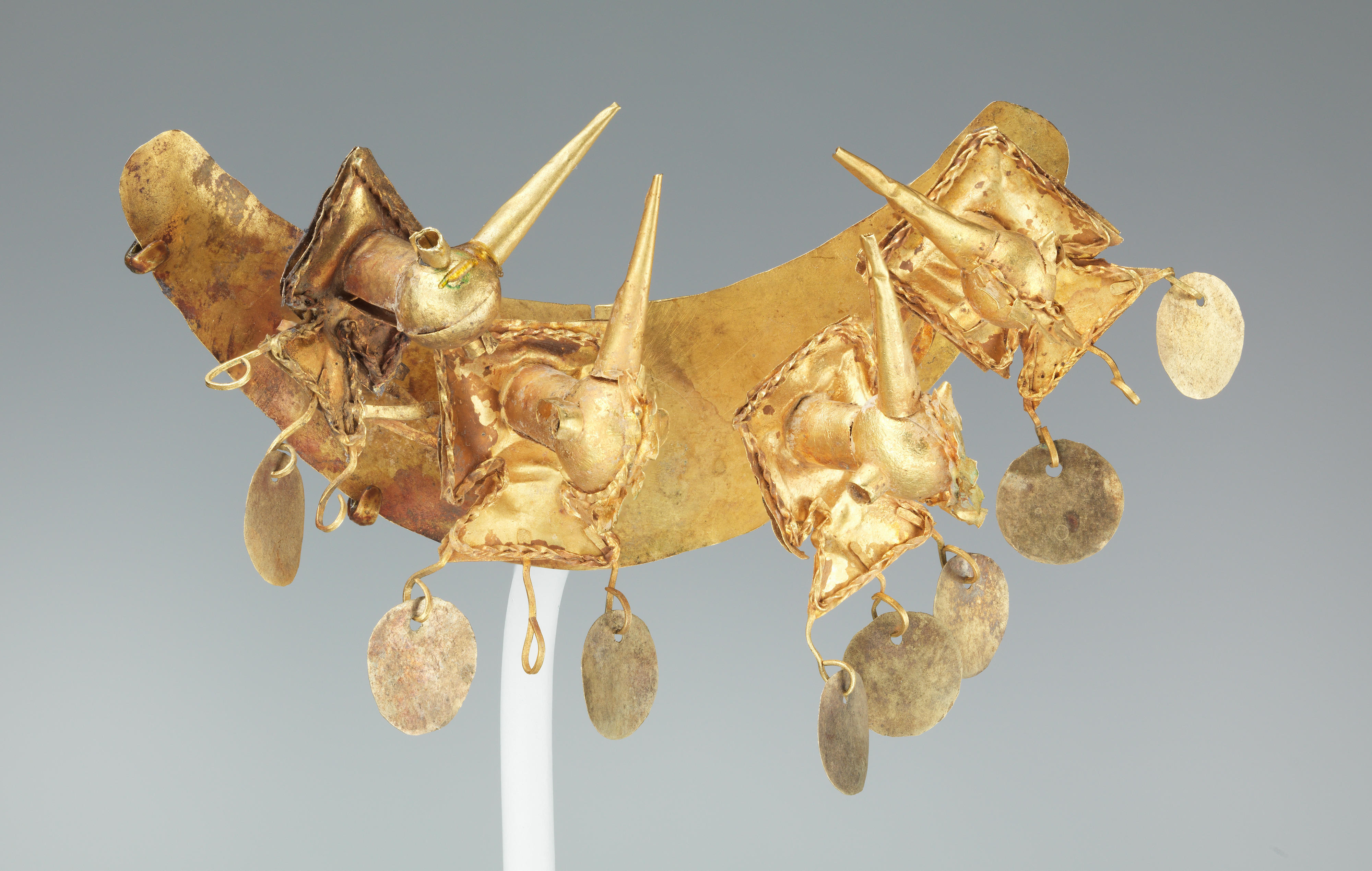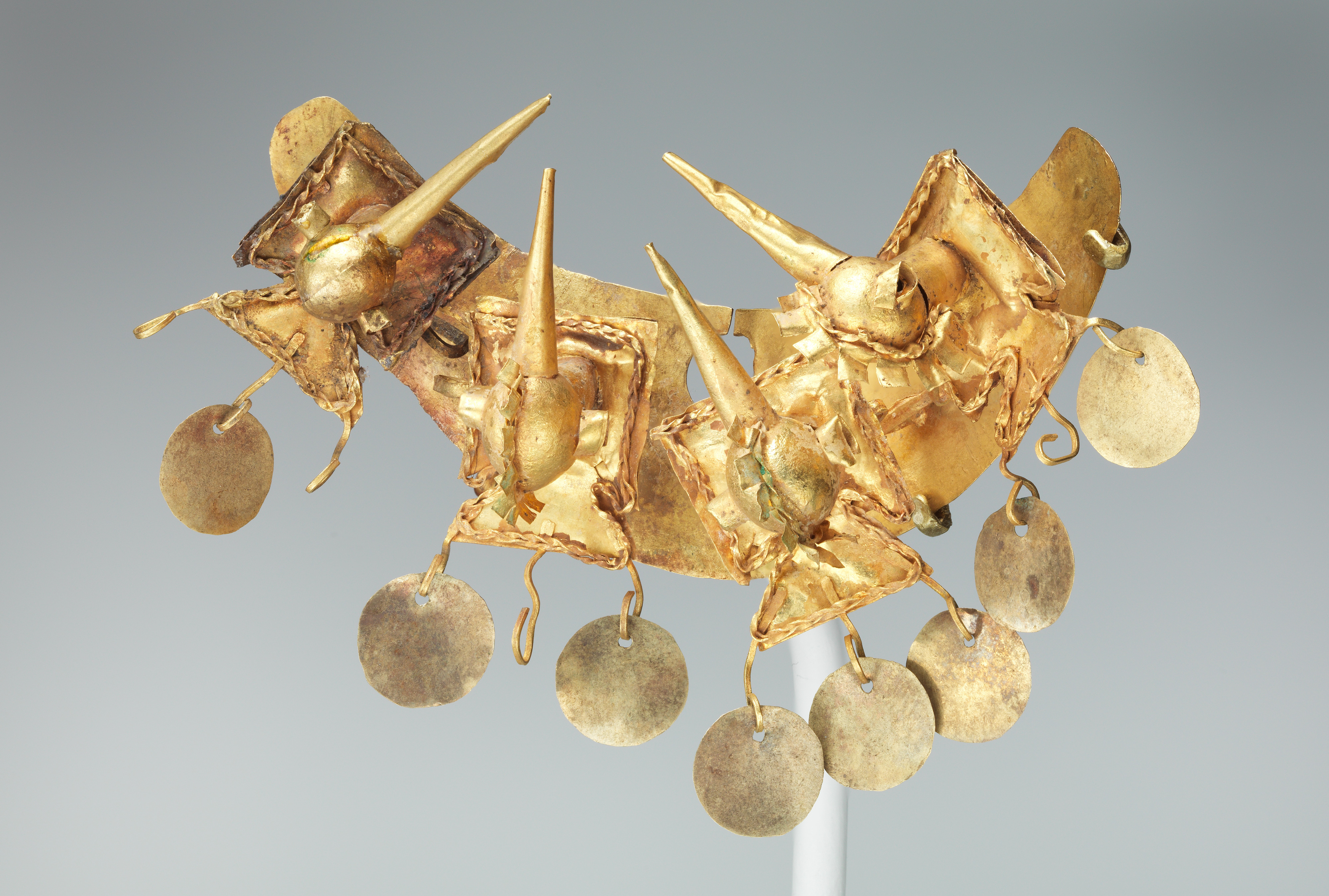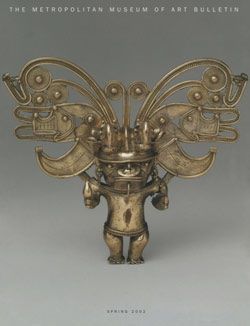Nose Ornament
In the northern Peruvian department of Piura, close to the Ecuadorian border, ancient metalsmiths developed a technique that utilized gold sheet assembled into complex three-dimensional figures that were further elaborated with the application of gold wire filigree. This nose ornament, worn attached to the nasal septum, has four upward-facing hummingbirds resting on a crescent-shaped sheet. The head of each bird is formed from two hemispheric pieces of gold soldered together and placed upon a cylindrical neck. The eyes are formed from cylinders of gold sheet with punched holes for the pupils. The beak was formed from a small cone of gold sheet. A crest, made from a strip of gold cut into eight small tabs and edged with twisted gold wire, runs down the top of each head. The bird’s bodies are formed from two small gold sheets soldered together and the edges of the top sheet outlined with braided gold wires. At the end of each tail, three golden dangles hang from thin gold wires.
References and Further Reading
Castillo, Luis Jaime. “Masters of the Universe: Moche Artists and Their Patrons.” In Golden Kingdoms: Luxury Arts in the Ancient Americas, edited by Joanne Pillsbury, Timothy Potts, and Kim N. Richter, pp. 24-31. Los Angeles: J. Paul Getty Museum, 2017.
Disselhoff, Hans-Dietrich. "Metallschmuck aus der Loma Negra, Vicus (Nord-Peru)." Antike Welt vol. 3 (1972), pp. 43–53.
Vetter, Luisa, and Maria Filomena Guerra. “Simbolismo de las narigueras peruanas y aproximación a su manufactura durante el periodo intermedio temprano.” Bulletin de l’Institut français d’études andines 48, no. 2 (2019): 109–33.
This image cannot be enlarged, viewed at full screen, or downloaded.
This artwork is meant to be viewed from right to left. Scroll left to view more.





